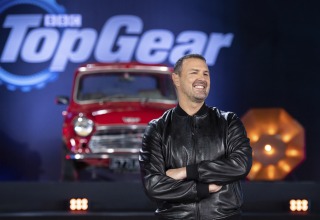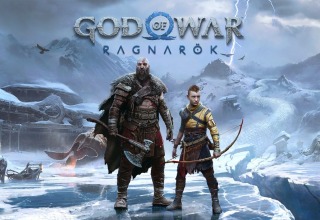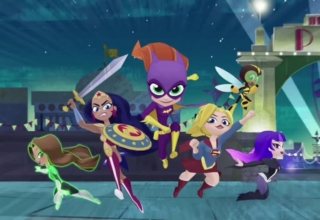“By the power of Grayskull! I have the Powaaaaaaaaaaaaaaaaaaaar!!!” At this point you either have the He-Man theme song stuck in your head or you weren’t around in the 1980s. There was no bigger toy line nor animated show of its time. Not even the Transformers or Ninja Turtles could lay claim to quite such a powerful franchise.
One other thing separates them from the He-Man world: they at least had a hit movie or two, whereas the Master of the Universe left an Eternia-sized crater at the box office.
When He-Man finally arrived on the big screen, his world had just been overthrown by the evil Skeletor. In an attempt to stop the skull-faced monster, He-Man and his band of friendly freedom fighters escape to a different dimension – Earth, conveniently. Here they team up with a young Courtney Cox and her boyfriend who had mistaken the inter-dimensional key as a Japanese music synthesiser. To be fair, that was before the Internet came along. You could probably tell people the Japanese had invented a flying robot and they would believe you.
Yet that is the least of this movie’s faux pas. Its real crime was just being a unimaginative, soulless cash-in that tried to blatantly tap Star Wars‘ popularity. Skeletor’s musical theme is a hair away from Darth Vader’s march, his evil robot minions have a suspicious resemblance to some Imperial uniforms and some vehicles look like they came out of a garage in a galaxy far, far away. It doesn’t help that Skeletor’s death looks pretty much exactly like the demise of the Emperor in Return of the Jedi.
He-Man looks quite a lot like he should, but the resemblance stops there. There is no princely doppleganger, no giant green tiger and no feats of amazing strength. He-Man hardly even uses his sword, unless it’s to deflect laser shots in a Jedi-like fashion. How the litigious George Lucas didn’t go after this is a miracle. Maybe he never saw it. Almost nobody else did, creating a big flop out of what was a billion dollar franchise.
What happened? Cannon, which owned the rights to a He-Man movie, for reasons unknown hired a man with no real directing experience. They signed up Dolf Lundgren, who had only starred in two English-language feature films – and played the villain in both. His heavy accent, combined with weak action scenes, really undermined the lead character. Cannon also couldn’t use the animated show’s properties: the rights it owned were based on the toy line, which actually has a different storyline to the Filmation animated series. Filmation had nothing to do with the movie, so neither did the rich tapestry it wove for He-Man’s world.
The result is something that makes Michael Bay look like Orson Welles or at least Ridley Scott. Today Masters of the Universe lives both as a warning for movie makers and a lazy, fun time with a bit of Eighties nostalgia. But the world owes it: there is little doubt that subsequent toys-turned-movie projects learned from the lessons of Master of the Universe. Primarily, it’s okay to get some things wrong, but don’t cock it all up. Even the word’s greatest toy franchise cannot prop up a bad movie – not until you get to the sequels, at least.
[/column] [column size=one_half position=last ]



Cinophile is a weekly feature showcasing films that are strange, brilliant, bizarre and explains why we love the movies.
Last Updated: July 6, 2015






















xdvd
July 6, 2015 at 16:38
Definetly in the so bad it’s good category, lol.